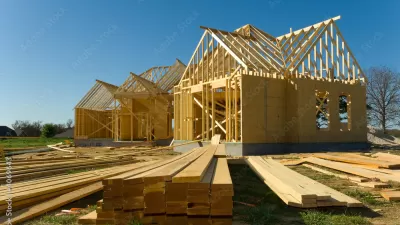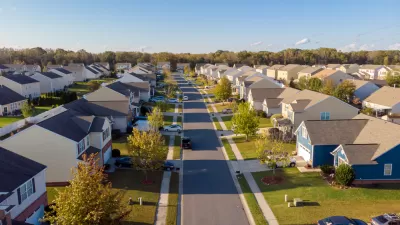The history of U.S. housing construction has traditionally been the story of many companies building a few homes a year. Now two companies alone are out-building the rest of the top ten homebuilders combined.

The history of U.S. housing construction has traditionally been the story of many companies building a few homes a year. Now two companies alone are out-building the rest of the top ten homebuilders combined.
Gopal Ahluwalia, Kermit Baker, and Kent Colton write for the Joint Center for Housing Studies of Harvard University to examine trends in the housing construction industry. The headlining finding of the report: a few homebuilders are responsible for the vast majority of new homes sold in the United States, with two companies in particular, Lennar and D.R. Horton, cornering more and more of the homebuilding industry.
In a new working paper titled “Concentration in the Homebuilding Industry: Trends, Strategies, and Prospects,” the researchers find that “[t]he 100 largest home builders in the US now account for about half of all new single-family home sales, up from just over a third two decades ago.” That market summary comes with a significant caveat: two companies, D.R. Horton and Lennar “were responsible for almost two-thirds of the gain in market share among the top 100 builders from 2002 to 2020.”
“As a result of this growth, these two firms now build more homes than the combined total of the nation’s third to tenth largest home builders,” add the authors. The trends are noteworthy, because “the homebuilding industry has traditionally been one of the most fragmented industries in the US economy.”
The source article, linked below, includes more data and infographics to introduce the working paper.
FULL STORY: CONCENTRATION IN HOMEBUILDING DRIVEN BY A FEW LARGE BUILDERS

Study: Maui’s Plan to Convert Vacation Rentals to Long-Term Housing Could Cause Nearly $1 Billion Economic Loss
The plan would reduce visitor accommodation by 25,% resulting in 1,900 jobs lost.

Alabama: Trump Terminates Settlements for Black Communities Harmed By Raw Sewage
Trump deemed the landmark civil rights agreement “illegal DEI and environmental justice policy.”

Why Should We Subsidize Public Transportation?
Many public transit agencies face financial stress due to rising costs, declining fare revenue, and declining subsidies. Transit advocates must provide a strong business case for increasing public transit funding.

Paris Bike Boom Leads to Steep Drop in Air Pollution
The French city’s air quality has improved dramatically in the past 20 years, coinciding with a growth in cycling.

Why Housing Costs More to Build in California Than in Texas
Hard costs like labor and materials combined with ‘soft’ costs such as permitting make building in the San Francisco Bay Area almost three times as costly as in Texas cities.

San Diego County Sees a Rise in Urban Coyotes
San Diego County experiences a rise in urban coyotes, as sightings become prevalent throughout its urban neighbourhoods and surrounding areas.
Urban Design for Planners 1: Software Tools
This six-course series explores essential urban design concepts using open source software and equips planners with the tools they need to participate fully in the urban design process.
Planning for Universal Design
Learn the tools for implementing Universal Design in planning regulations.
Smith Gee Studio
Alamo Area Metropolitan Planning Organization
City of Santa Clarita
Institute for Housing and Urban Development Studies (IHS)
City of Grandview
Harvard GSD Executive Education
Toledo-Lucas County Plan Commissions
Salt Lake City
NYU Wagner Graduate School of Public Service





























